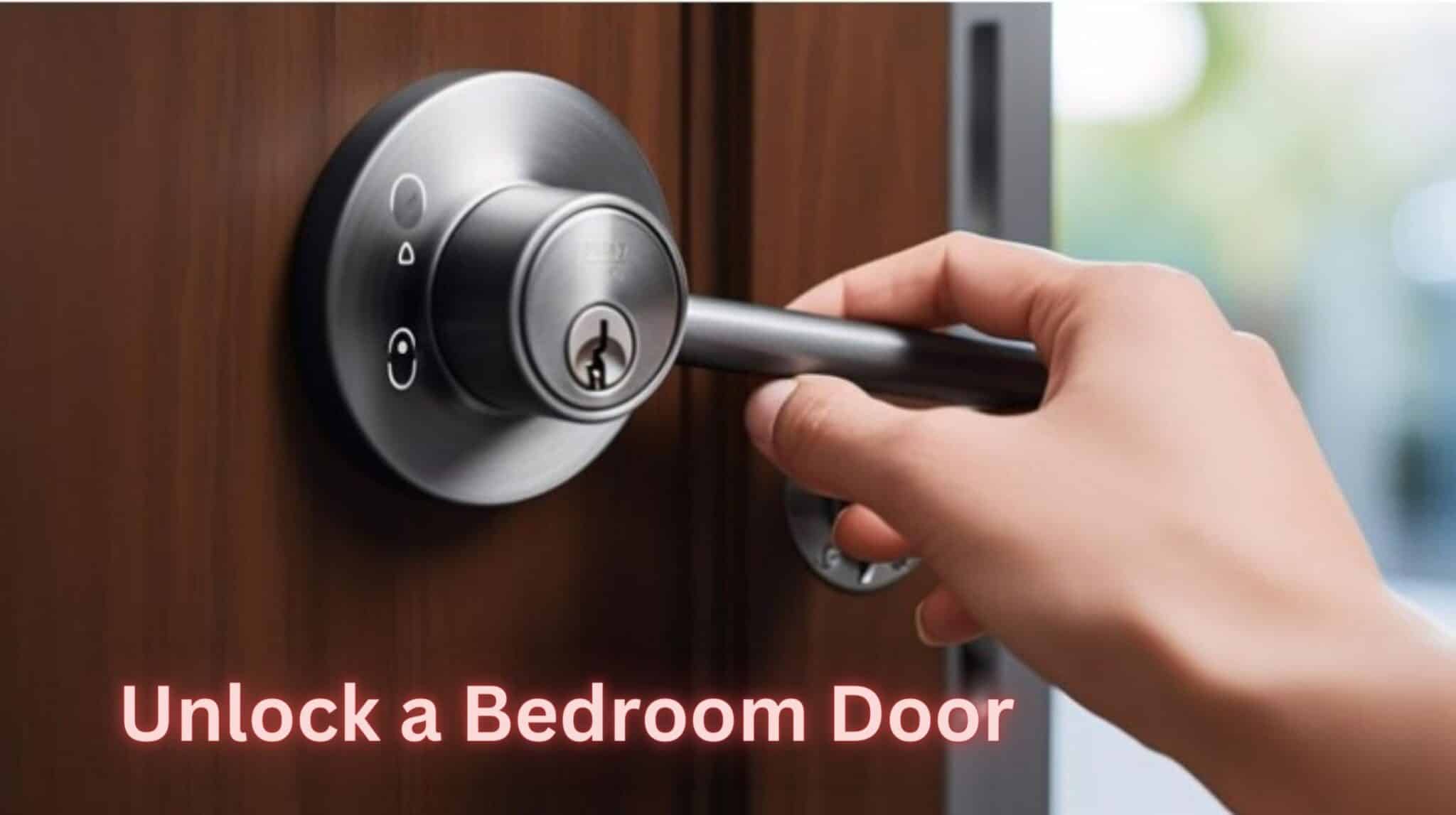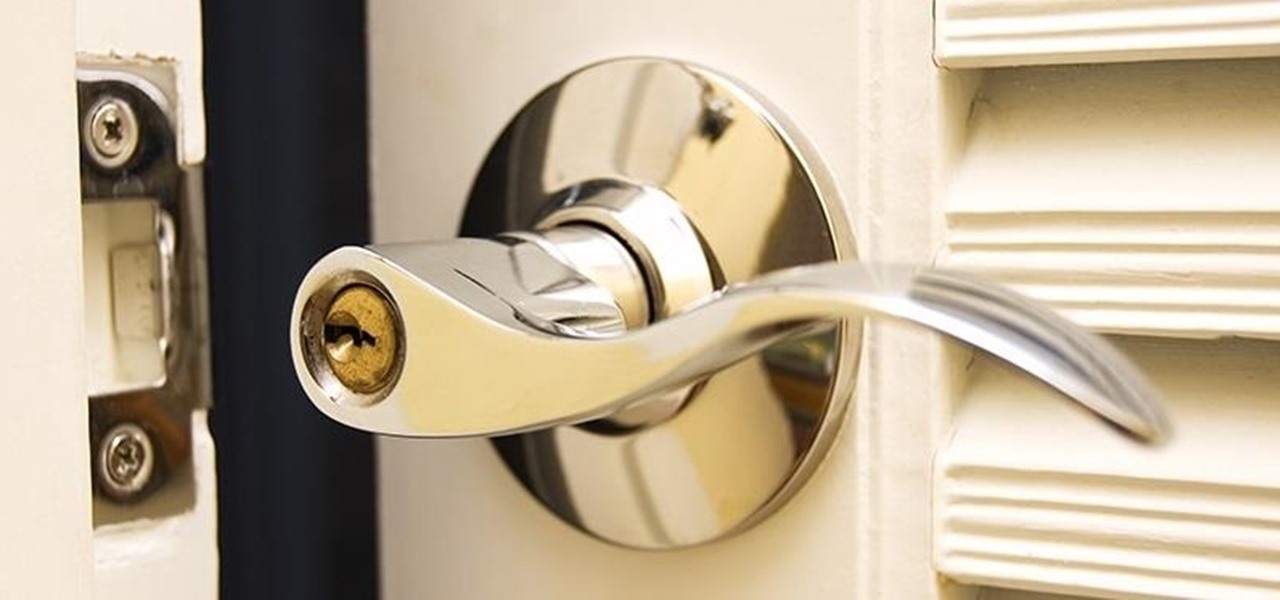Common Door Lock Types

Choosing the right door lock for your home is an important decision, impacting your security and peace of mind. Understanding the different types of door locks available is crucial to make an informed choice. Let’s explore some common door lock types and their advantages and disadvantages.
Deadbolt Locks
Deadbolt locks are considered the most secure type of door lock, offering a high level of resistance against forced entry. They operate using a bolt that extends into the doorjamb, locking the door in place.
Deadbolts are generally available in two main styles: single-cylinder and double-cylinder. Single-cylinder deadbolts have a keyhole on the exterior side of the door, while the interior side can be operated with a turn knob or lever. Double-cylinder deadbolts have keyholes on both sides, requiring a key to unlock from both the inside and outside.
Deadbolt Advantages
- High Security: Deadbolts are known for their robust construction and resistance to forced entry.
- Versatility: They can be installed on various types of doors and are suitable for both residential and commercial applications.
- Wide Range of Options: Deadbolts are available in various finishes, styles, and security features to suit different preferences.
Deadbolt Disadvantages
- Limited Ease of Use: Double-cylinder deadbolts require a key for both inside and outside operation, which can be inconvenient in emergencies.
- Potential for Jamming: If the deadbolt is not properly aligned or lubricated, it can become difficult to operate.
Lever Handle Locks
Lever handle locks are commonly used for interior doors and offer a convenient and user-friendly locking mechanism. They consist of a lever handle that is pushed down to unlock the door.
Lever Handle Advantages
- Ease of Use: Lever handles are easy to operate, even for individuals with limited hand strength or dexterity.
- Stylish Design: Lever handles are available in a wide variety of styles and finishes, enhancing the aesthetics of your doors.
- Accessibility: Lever handles are generally easier to use for individuals with disabilities or mobility challenges.
Lever Handle Disadvantages
- Lower Security: Compared to deadbolts, lever handles offer less resistance to forced entry, making them less secure for exterior doors.
- Potential for Break-Ins: Lever handles can be more susceptible to break-ins using tools like a credit card or a thin piece of metal.
Knob Locks
Knob locks are a classic and traditional door lock type, often used for interior doors. They feature a round knob that is turned to lock or unlock the door.
Knob Lock Advantages
- Simplicity and Affordability: Knob locks are simple to install and are generally more affordable than other lock types.
- Wide Availability: They are readily available in various styles and finishes to complement your door hardware.
- Easy Maintenance: Knob locks are generally low-maintenance and require minimal upkeep.
Knob Lock Disadvantages
- Lower Security: Similar to lever handles, knob locks offer less resistance to forced entry than deadbolts.
- Limited Features: Knob locks typically lack advanced features like keyless entry or automatic locking mechanisms.
Troubleshooting Common Door Lock Problems: Key To Unlock Bedroom Door

Door locks, like any mechanical device, can encounter issues. Recognizing these issues and implementing the appropriate solutions can save you time, money, and frustration. This guide provides a step-by-step approach to troubleshoot common door lock problems, empowering you to address them effectively.
Jammed Keys
Jammed keys can be a frustrating experience. This issue often arises due to debris, dirt, or wear and tear within the lock cylinder. Here are some potential causes and solutions:
- Cause: Debris or dirt obstructing the key’s movement.
- Solution: Use a pencil eraser or a small, non-abrasive brush to gently remove debris from the keyhole. Avoid using sharp objects that might damage the lock.
- Cause: Worn-out key or keyway.
- Solution: If the key is excessively worn, consider getting a new key cut by a locksmith. Worn keyways can also be re-keyed by a locksmith, restoring their functionality.
- Cause: Stuck tumblers within the lock cylinder.
- Solution: Gently tap the lock cylinder with a hammer or rubber mallet. This can sometimes dislodge stuck tumblers. If this doesn’t work, you may need to call a locksmith for assistance.
Stuck Latches
A stuck latch can prevent the door from closing or opening properly. This issue often occurs due to misalignment, wear, or obstruction.
- Cause: Misaligned latch or strike plate.
- Solution: Use a screwdriver to adjust the strike plate or latch, ensuring they align correctly. If necessary, consult a professional locksmith for assistance with complex adjustments.
- Cause: Worn-out latch mechanism.
- Solution: Replacing the latch mechanism is often the best solution for a worn-out latch. Consult a locksmith or hardware store for replacement options compatible with your door and lock.
- Cause: Obstruction in the latch path.
- Solution: Inspect the latch path for any obstructions, such as carpet fibers, debris, or foreign objects. Remove any obstructions to restore smooth latch operation.
Broken Knobs
Broken door knobs can hinder door functionality and compromise security. The most common causes of broken knobs include excessive force, wear, or damage.
- Cause: Worn-out internal components within the knob.
- Solution: Replacing the entire knob assembly is usually the most effective solution. Consult a locksmith or hardware store for compatible replacement knobs.
- Cause: Damaged knob mechanism due to excessive force or impact.
- Solution: If the knob mechanism is damaged beyond repair, replacing the knob assembly is necessary. Consult a locksmith or hardware store for compatible replacement options.
Troubleshooting Flowchart for a Stuck Door Lock
Key to unlock bedroom door – This flowchart Artikels the steps to troubleshoot a stuck door lock:
[Flowchart Image Description: A simple flowchart with four boxes. The first box says “Is the key jammed?”. If yes, then the flowchart branches to the box “Try removing debris from the keyhole”. If no, then the flowchart branches to the box “Is the latch stuck?”. If yes, then the flowchart branches to the box “Check for obstruction in the latch path”. If no, then the flowchart branches back to the box “Is the key jammed?”.]
Security Considerations for Bedroom Doors

Your bedroom is your sanctuary, a place where you should feel safe and secure. It’s essential to prioritize the security of your bedroom door, as it’s the first line of defense against unwanted intrusion. Choosing the right door lock can significantly enhance the security of your personal space.
Choosing a High-Quality and Secure Door Lock
A high-quality and secure door lock is crucial for protecting your privacy and valuables. Consider these factors when selecting a lock for your bedroom door:
- Material: Solid brass or stainless steel locks are generally more durable and resistant to tampering than cheaper alternatives.
- Keyway: Choose a lock with a keyway that is difficult to pick or bump. Keyways like Schlage C-key and Kwikset SmartKey are known for their higher security.
- Anti-Bumping Technology: This feature prevents the use of special tools to manipulate the lock mechanism. Locks with anti-bumping technology offer a higher level of security.
- Pick-Resistance: A pick-resistant lock is designed to resist attempts to unlock it with a lock pick. Look for locks with features like pin-tumbler mechanisms and hardened steel components.
- Certifications: Locks with certifications from reputable organizations like UL (Underwriters Laboratories) or ANSI (American National Standards Institute) are tested and verified to meet specific security standards.
Benefits of Using a Deadbolt, Key to unlock bedroom door
Deadbolts are considered a more secure option compared to traditional knob locks. Here’s why:
- Stronger Locking Mechanism: Deadbolts have a more robust locking mechanism that engages a solid metal bolt into the doorjamb, providing greater resistance against forced entry.
- Increased Resistance to Picking and Bumping: Deadbolts often feature more complex locking mechanisms, making them more difficult to pick or bump.
- Double Locking: Deadbolts can be locked from the inside with a turn of the knob, providing an extra layer of security.
Comparing Different Lock Features
Here’s a table comparing different lock features, helping you choose the best option for your bedroom door:
| Feature | Description | Security Level | Keyway | The shape of the keyhole | Varies; some keyways are more difficult to pick or bump | Anti-Bumping Technology | Prevents the use of special tools to manipulate the lock mechanism | High | Pick-Resistance | Resists attempts to unlock the lock with a lock pick | High | Certifications | Indicate the lock meets specific security standards | High |
|---|
Kunci kamar tidurmu ilang? Udah kayak film horor, deh! Tapi tenang, sebelum panik, coba cek dulu bawah karpet. Siapa tau kamu nemu kunci di situ. Ngomong-ngomong soal karpet, kamu lebih suka karpet atau lantai kayu di kamar tidur? Baca artikel ini untuk tahu mana yang lebih cocok buat kamarmu.
Kalo udah ketemu kuncinya, jangan lupa kunci pintu kamarnya lagi ya, biar aman!
Bos, mau masuk kamar tapi kunci hilang? Tenang, ada beberapa cara buat buka pintu. Coba cek dulu jenis kunci di pintu kamarmu, bedroom door lock types bisa kasih info lebih lengkap. Setelah tahu jenis kuncinya, baru deh cari cara buka yang pas, entah pake kunci duplikat atau alat pembuka pintu.
Jangan lupa, keamanan kamar tetap prioritas ya!
